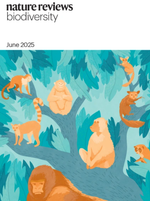JANEY MESSINA, EXPERT - INFECTIOUS DISEASES
View Journal Article / Working PaperSince the 1940s, more than 335 infectious diseases have emerged globally1, 60 to 80 percent of which have originated in animals2. Although emergent diseases have caused deadly pandemics for millennia, these figures raise questions as to why zoonotic disease transmission to humans, and the often deadly pandemics which follow, have become the norm. Many factors are to blame, and while rapid and ongoing vaccine development and the strengthening of health systems are necessary channels for tackling the global spread of infectious diseases, we must also urgently address the conditions that allow for diseases to emerge or re-emerge in the first place. Crucially, environmental change and degradation have resulted in the disruption of the natural habitats of many animals. These disruptions mean that barriers between humans, animals, and the pathogens they carry are weakened. In other words, failure to prevent ongoing climate change, deforestation, and degradation of natural ecosystems will lead to a continued regularity of infectious disease outbreaks in humans. This paper outlines four modes of infectious disease transmission and emphasizes several types of environmental change which continue to fuel global disease emergence.




